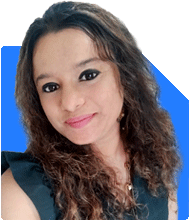Ramalingam Kalirajan |10872 Answers |Ask -Follow
Mutual Funds, Financial Planning Expert - Answered on May 30, 2024
He has an MBA in finance from the University of Madras and is a certified financial planner.
He is the director and chief financial planner at Holistic Investment, a Chennai-based firm that offers financial planning and wealth management advice.... more

I have 36000 salary and investing 7500/month in SIP and every month 2000rs I'm purchasing stocks(I take own study), Total 9500/month Mutual funds are direct growth *SBI midcap fund 1000* *SBI consumption opportunity fund 1000* *Canara robeco tax saving fund 2000* *Quant small cap 2000* *Quant dynamic asset allocation fund 1000* *Digital gold 500/month* One year old portfolio 10-15 years time zone For retirement plan
Your investment strategy, blending systematic investment plans (SIPs) in mutual funds and direct stock purchases, showcases a proactive approach to building wealth for retirement. Let's delve deeper into each component to ensure it aligns with your long-term financial goals while addressing associated risks.
SIP Investments:
Diversified Portfolio: Your allocation across various mutual funds, including mid-cap, tax-saving, small-cap, and dynamic asset allocation, offers diversification benefits, spreading risk across different asset classes and market segments.
Consistent Investing: Regular monthly investments through SIPs demonstrate discipline and harness the power of compounding over the long term, contributing significantly to wealth accumulation.
Professional Management: Mutual funds are managed by seasoned fund managers who conduct in-depth research and analysis, potentially delivering superior returns compared to individual stock picking.
Direct Stock Purchases:
Hands-on Approach: Actively purchasing stocks based on personal study reflects an engaged investment approach, potentially leading to enhanced returns through astute stock selection and market insights.
Risks of Individual Stock Selection: Direct stock investing entails specific risks, including company-specific risks such as poor management decisions, industry risks, and market volatility, which can adversely impact portfolio performance.
Lack of Diversification: Concentrating investments in a few individual stocks exposes the portfolio to higher idiosyncratic risk compared to diversified mutual funds, where risk is spread across multiple securities.
Risks of Direct Stock Investing Over Mutual Funds:
Higher Volatility: Individual stocks tend to be more volatile than diversified mutual funds, as their prices are influenced by company-specific news and events, leading to larger price fluctuations.
Lack of Professional Management: Direct stock investors bear the responsibility of conducting thorough research, monitoring stock performance, and making timely decisions, which may not always match the expertise and resources of professional fund managers.
Higher Transaction Costs: Direct stock investing often incurs higher transaction costs, including brokerage fees, taxes, and bid-ask spreads, which can erode returns, especially for small investors.
Risks of Direct Funds Over Regular Mutual Fund Distributors (MFDs):
Limited Access to Advice: Investing directly in mutual funds may limit access to personalized financial advice and guidance provided by certified financial planners or experienced mutual fund distributors, potentially leading to suboptimal investment decisions.
Lack of Portfolio Monitoring: Direct investors are responsible for monitoring their portfolios, tracking fund performance, and rebalancing asset allocations, which requires time, knowledge, and expertise.
Potential for Missed Opportunities: Without the assistance of a regular mutual fund distributor, investors may miss out on new fund offerings, market insights, and investment opportunities that could enhance portfolio returns and diversification.
Recommendations:
Review Portfolio Composition: Periodically review your portfolio to ensure it remains aligned with your risk tolerance, investment objectives, and time horizon, considering the risks associated with direct stock investing.
Risk Management: Continuously monitor individual stock performance and mutual fund returns to identify underperforming assets and take necessary actions to mitigate risks.
Asset Allocation: Rebalance your portfolio periodically to maintain an optimal asset allocation based on your risk profile and investment goals, considering the risks inherent in both direct stock investing and direct mutual fund investments.
Consult a Certified Financial Planner: Seek professional advice from a Certified Financial Planner to reassess your retirement goals, risk tolerance, and investment strategy, ensuring it remains conducive to achieving your long-term financial objectives while mitigating associated risks.
Your proactive approach towards retirement planning is commendable. By remaining disciplined, diversifying your investments, and periodically reviewing your portfolio, you're on track to build a robust financial foundation for retirement.
Best Regards,
K. Ramalingam, MBA, CFP,
Chief Financial Planner,
www.holisticinvestment.in
You may like to see similar questions and answers below
Ramalingam Kalirajan |10872 Answers |Ask -Follow
Mutual Funds, Financial Planning Expert - Answered on May 29, 2024
Jinal Mehta | Answer |Ask -Follow
Financial Planner - Answered on Mar 18, 2024
Jinal Mehta | Answer |Ask -Follow
Financial Planner - Answered on Mar 18, 2024
Radheshyam Zanwar |6735 Answers |Ask -Follow
MHT-CET, IIT-JEE, NEET-UG Expert - Answered on Dec 06, 2025
Dr Nagarajan J S K |2576 Answers |Ask -Follow
NEET, Medical, Pharmacy Careers - Answered on Dec 06, 2025
Mihir Tanna |1090 Answers |Ask -Follow
Tax Expert - Answered on Dec 06, 2025
Ramalingam Kalirajan |10872 Answers |Ask -Follow
Mutual Funds, Financial Planning Expert - Answered on Dec 06, 2025
Radheshyam Zanwar |6735 Answers |Ask -Follow
MHT-CET, IIT-JEE, NEET-UG Expert - Answered on Dec 06, 2025
Radheshyam Zanwar |6735 Answers |Ask -Follow
MHT-CET, IIT-JEE, NEET-UG Expert - Answered on Dec 06, 2025
Radheshyam Zanwar |6735 Answers |Ask -Follow
MHT-CET, IIT-JEE, NEET-UG Expert - Answered on Dec 06, 2025
Dr Dipankar Dutta |1837 Answers |Ask -Follow
Tech Careers and Skill Development Expert - Answered on Dec 05, 2025
Dr Shyam Jamalabad |108 Answers |Ask -Follow
Dentist - Answered on Dec 05, 2025
Dr Shyam Jamalabad |108 Answers |Ask -Follow
Dentist - Answered on Dec 05, 2025

























